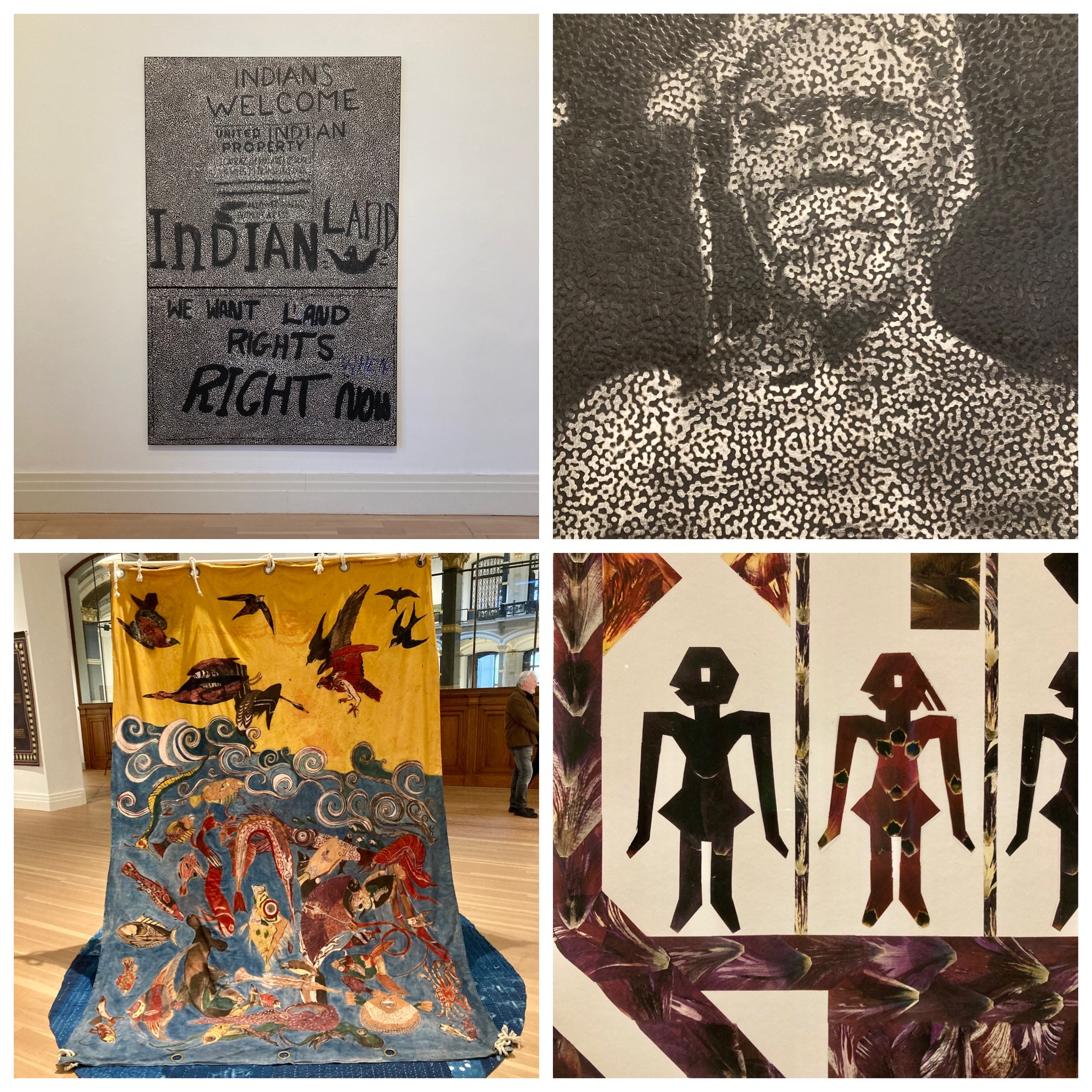
Indigo Waves and Other Stories
It’s a Saturday morning and it’s still very quiet in the Gropius Bau. I am looking forward to the exhibition “Indigo Waves and Other Stories: Re-Navigating the Afrasian Sea and Notions of Diaspora” – a group exhibition of writers, artists, filmmakers and musicians in the Gropius Bau. The exhibition consists of video installations, collages, paintings and much more.
What the different media have in common is the starting point of the Indian Ocean – the body of water connecting the African and Asian continents. The works in the exhibition explore cultural, historical and linguistic aspects of this region. A linguistic question is also the first one I encounter. In her novel “The Dragonfly Sea”, Yvonne Adhiambo Owuor has the protagonists give the ocean many names and yet none seems appropriate. None of them can express in its fullness what this ocean stands for in its entirety. Ziwa Kuh, Bahari Hindi or Afrasian Sea are just some of the alternatives.
I let myself be carried along by the rooms and stop for a long time in front of the works by Jennifer Tee. They are so colourful, rich in detail. I keep discovering new facets. The artist, who lives in Amsterdam, recalls her Chinese-Indonesian ancestors with her tampan and palapei textiles (ship’s shawls). Only after a few moments do I realise that it is a collage of petals and that this is how the details and patterns emerge. The petals are from tulips, which reflects her family history. Her father and grandfather have a close connection to the Netherlands and shipping. I move on to watch Clara Jo’s video installation. The approximately 20-minute film traces the history of epidemics and the resulting quarantine and colonial hospitals of the Indian Ocean. For this, she chooses a perspective that portrays humans as intruders into nature, permanently changing and damaging it. Then I am already looking into the next room, attracted by the music that accompanies “Hymn and Parables” by Adama Delphine Fawundu. A mixture of video footage and sculptures show the importance of water as a purification and sacrificial ritual that follows the cycle of human life.
At the end, I feel a brief regret that I am already in the last room of this exhibition, which shows the wonderful textile paintings by Lavanya Mani. She echoes the biblical tale of Noah’s Ark and, in her painting, shows animals that are threatened with extinction or will be in the near future in search of safety.
It is a small exhibition that is very engaging because of the variety of media in which the artists express themselves. However, a lot of time can be spent in this exhibition and I can only recommend that you really do take that time. The perspectives offered are so diverse and eye-opening. They still resonate with me weeks later.
After this impressive exhibition, I go to the first floor of the Gropius Bau. Here I find “Rainbow Serpent (VERSION)”, an exhibition by the Australian and Indigenous artist Daniel Boyd. Non-Indigenous people in Australia use the term Rainbow Serpent to refer to a variety of First Nations creation stories. By adding the word “version”, Boyd refers to the diversity and individual stories of First Nations. With his works, he questions Australia’s founding history and colonial knowledge production. Boyd’s paintings are covered with black dots, which he himself calls lenses, which seems to make the images move. The exhibition is difficult to put into words. It offers an overview of his work to date and includes paintings depicting film scenes from the movie “Mutiny on the Bounty”, resistance movements around Angela Davis, Queen Elizabeth’s dance with Ghana’s President Kwame Nkrumah in 1956, and thereby illustrates the Eurocentric perspective of narratives.
Here, too, I took a lot of time; the exhibition texts put many things in a completely different context for me – I was not particularly familiar with the history of the First Nations and the history of Australia in general.
This show also resonates strongly with me. I am fascinated by the technique Boyd uses to create his paintings, and he also very skilfully uses familiar images, which he then completely reframes. I can only recommend taking a few hours to spend time with both exhibitions. Daniel Boyd’s “Rainbow Serpents (VERSION)” runs until 09.07.2023. The group exhibition “Indigo Waves and Other Stories” runs until 13.08.2023 at the Gropius Bau Berlin.

